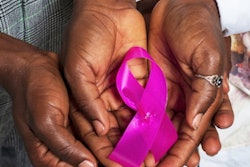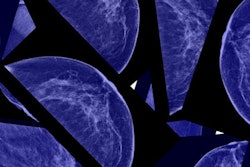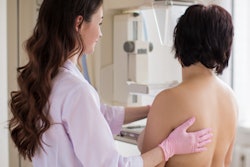Nearly one-third of women report being confused about breast cancer screening recommendations, according to survey findings published on October 16 by the Ohio State University Comprehensive Cancer Center.
Researchers led by Ashley Pariser, MD, found that while about 93% of individuals recognize a lump as a symptom of breast cancer, less than half recognize other common symptoms tied to the disease.
“Screening mammography is our No. 1 defense in detecting and addressing breast cancers at their earliest, most treatable stages, but it is also very important for people to be familiar with the look and feel of their own breast tissue so that sometimes subtle changes can be evaluated quickly to give us the best chance at early detection,” Pariser said in a statement.
While advances have been made in recent decades for breast cancer diagnosis and treatment, the disease still presents as a persistent challenge in women’s health. In 2023 alone, medical societies and organizations updated their recommendations for breast cancer screening, though they aren’t uniform.
For example, the American College of Radiology recommends that all women undergo a breast cancer risk workup by the age of 25 while reiterating that women should begin annual mammography at age 40. The U.S. Preventive Services Task Force meanwhile recommends biennial screening with mammography beginning at age 40 for all women, a B-grade recommendation.
Pariser and colleagues sought to gather perceptions regarding breast cancer screening and assess people's knowledge of breast cancer symptoms. They used a national, twice-per-month, probability-based survey and collected data via the web and telephone from September 22 to 24, 2023, from a sample of 1,004 respondents. Of the total respondents, 563 identified as female and 424 identified as male.
The team found that of the total, 382 respondents either somewhat agreed or strongly agreed that they felt confused about recommended breast cancer screening guidelines. Of the total female respondents, 174 (30.9%) reported confusion about the guidelines.
The team also found that female respondents under the age of 30 reported the most confusion of all age groups studied in this area at 40.2% (43/107). Additionally, 31.6% of women (60/190) ages 30 to 49 years, 20.5% of women ages 50 to 64 years, and 34.1% of women ages 65 and older reported being confused about the screening recommendations.
The researchers also reported the following survey findings:
- Thirty-one percent recognized a retracted, inverted, or downward-pointing nipple as a symptom of breast cancer.
- Thirty-nine percent recognized breast puckering as a symptom.
- Less than half of survey respondents were aware of loss of breast feeling (41%), pitting/thickening of the breast skin (45%), or nipple charge (51%) as concerns worthy of medical attention.
- Seventy-five percent of women and 91% of men don’t believe they will get breast cancer.
For the latter data point, Pariser said that about 1% of breast cancers occur in men, typically presenting as nipple changes. She added that it is important that men feel empowered to seek medical attention for concerning symptoms, “especially if they have a strong family history of breast cancer.”
Pariser also said that for women, the best way to find breast cancer early is to present as soon as they notice a change, “ideally even before they see a change.”
The full survey findings can be viewed here.



















